Associations are experiencing rapid growth. According to the 2024 Membership Marketing Benchmarking Report, 51% of associations reported an increase in new members, building on a steady trend since 2021.
Interestingly, the top three reasons members join associations are all tied to learning:
- networking with peers,
- continuing professional development, and
- access to specialized, up-to-date information.
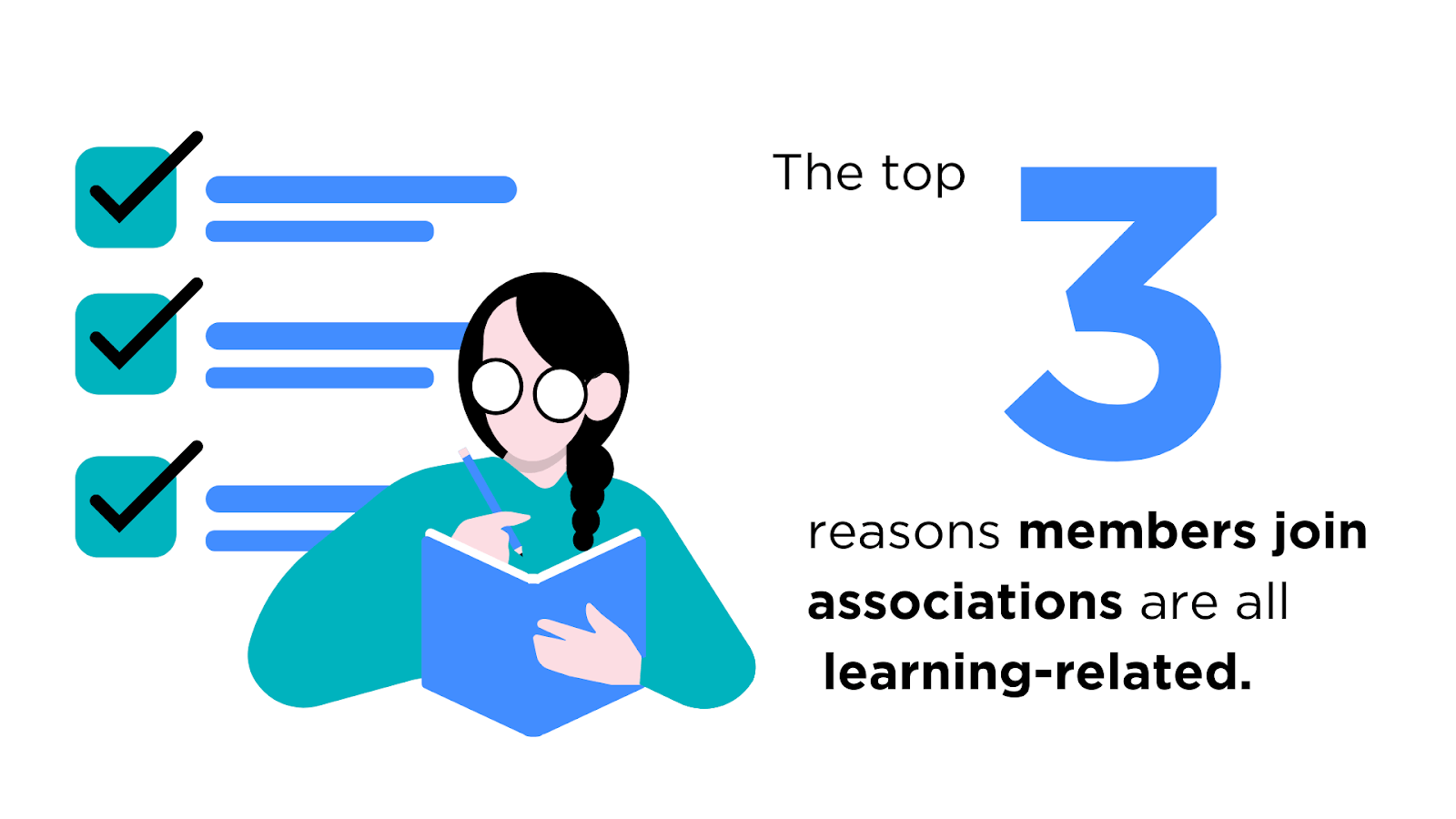
To meet the demands of a growing membership, associations face two key challenges: scalability and member engagement.
With features and functionalities like integrations, automations, personalized learning paths, and social learning tools, modern association learning management systems (LMSs) are the ultimate solution to drive engagement, support growing communities, and deliver continuous education.
| In this guide, we’ll explain: |
Let’s dive in!
What is an association learning management system?
| An association LMS is an online platform that helps both administrators and members with their e-learning needs. Trainers and instructional designers use it to create, curate, author, and distribute relevant online courses to members, streamline training processes, and track learner performance. |
An association LMS should not be confused with association management software (AMS).
These handle most association administrative tasks such as membership dues, registrations, budgeting, fundraising, or event planning.
Somewhat similar to a customer management system (CRM), an AMS stores critical business information and allows employees and other stakeholders to do their jobs better and easily.
However, AMSs differ from CRMs in that they provide an integrated way for stakeholders to handle all of the specific jobs required in an association or NGO.
An LMS for associations, on the other hand, focuses its features and functionalities on member engagement and career advancement opportunities such as online training, onboarding, continuing education (CE) credits, certification programs, coursework management, etc.
An LMS integration with your AMS can unify the two and bring numerous benefits to the table.
Benefits of using association learning management systems
Using an LMS has many benefits to associations, including:
|
Let’s go over each in more detail.
Providing learner assessments and gathering feedback
Association and NGO e-learning assessments for members and employees can take various forms. These can include things like surveys before or after an e-learning session.
Learner feedback is essential in helping you optimize your learning and development efforts and uncover trouble areas that may need improvement.
They can also take the form of a short quiz with either true or false, or multiple-choice questions. You can even go for more complex questions or examinations.
Connecting learners and members
Most professional LMS software also include robust communication and collaboration features to facilitate social learning.
Depending on the learning system, you can have live chats, forums, social streams, group discussions, leaderboards, and more.
Since the point of many associations is to bring people together, these LMS features fit like a glove. For example, before an event, members can come together and discuss and share ideas and best practices right in the LMS.
Generating non-dues revenue streams
Some association LMSs also have built-in or integrated e-commerce capabilities.
These allow associations to sell e-learning content and courses, webinar recordings, or conference registrations, among other things, to boost their revenue.
They can also include built-in or integrated payment gateways to streamline the process and conduct all transactions directly from the LMS dashboard.
Cutting training costs and saving time
LMSs are designed to help associations, NGOs, and other organizations streamline their e-learning processes, bring members together, and automate many time-consuming and repetitive tasks.
They also save organizations time and money regarding their member and employee training.
For example, Bethany Care Society, one of Western Canada’s largest NGOs for senior care, housing, and community services, joined up with Docebo to train its workforce of more than 2,000 people, across nine different locations.
In a relatively short amount of time, they were able to lower their annual orientation costs by 24 percent, spend 45 percent less time on their new-hire orientation process, and save over 372 in-classroom education hours.
Let’s now turn our attention to the key features of association LMSs.
Key features to look for in association learning management systems
When looking for an LMS to facilitate your member online-education programs, you need to consider one that includes the following features and functionalities.
Attracts and engages learners
The learning platform needs to include some functionalities able to boost learner engagement.
An easy-to-use and intuitive interface can also attract learners and increase the user experience. The same thing can also be said about making your course catalog public, as it can attract non-members to the association.
The LMS should also include different online learning methodologies able to drive engagement, retention, and course completion rates. Among these, we can include social learning, multimodal, hybrid, or blended learning.
In addition, they should include interactive course materials such as quizzes, live webinars, Q&A sessions, or microlearning.
Similarly, gamification elements such as leaderboards, points, badges, and other reward-based systems help boost engagement and course completion.
Includes continuing-education capabilities
Another important aspect of LMSs for associations is the ability to facilitate continuous learning.
This means the ability to personalize e-learning content delivery based on individual learning paths.
The LMS solution needs to include such features to provide the right learning experience for all association members registered in your learning programs.
Additionally, the system should also include CE credit and certification issuing and tracking functionality for skill assessment
Integrates with your existing tech stack
You can have direct AMS-LMS integration provided the two systems are compatible with each other.
The right LMS for your needs should be able to seamlessly integrate your HR tools and other systems to streamline operations and not cause friction among your business processes.
That being said, let’s take a look at the best association LMSs on the market today.
10 Best Association Learning Management Systems
| LMS | Best Suited For | Top Feature | G2 Rating | Pricing |
| Docebo | Growing associations looking to kick off eCommerce | Plenty of common and custom integrations and automations for unmatched scalability | 4.3 / 5 (638 reviews) | Upon request |
| Moodle | Associations with strict budget constraints | Open source API | 4.1 / 5 (414 reviews) | There is a free version available |
| Adobe Learning Manager | Adobe Learning Manager is best suited for associations that already use many Adobe products | Content authoring and integration with other Adobe products | 4.0 / 5 (314 reviews) | Comes with a free 30-day trial |
| TalentLMS | Associations looking for their first LMS | Customization | 4.6 / 5 (738 reviews) | There is a free version available |
| Blackboard Learn | Academic associations | Course content management | 3.9 / 5 (958 reviews) | Can try it for free |
| Canvas | Academic associations with limited budgets | Certification management | 4.4 / 5 (1484 reviews) | Can start as low as $8,575 |
| Litmos | Associations looking to begin their eCommerce journey | eCommerce functionality | 4.3 / 5 (608 reviews) | Upon request |
| Cornerstone | Established associations with a large audience | Content and learner management | 4.1 / 5 (509 reviews) | Can start as low as $10,334 |
| Sana Labs | Associations looking to stay innovative | AI content authoring | 4.8 / 5 (78 reviews) | Starts at $13 per license (max. 300 licenses) |
| LearnUpon | Associations solely focused on e-learning | E-learning course authoring | 4.6 / 5 (158 reviews) | Averages $30,127 in price |
Docebo
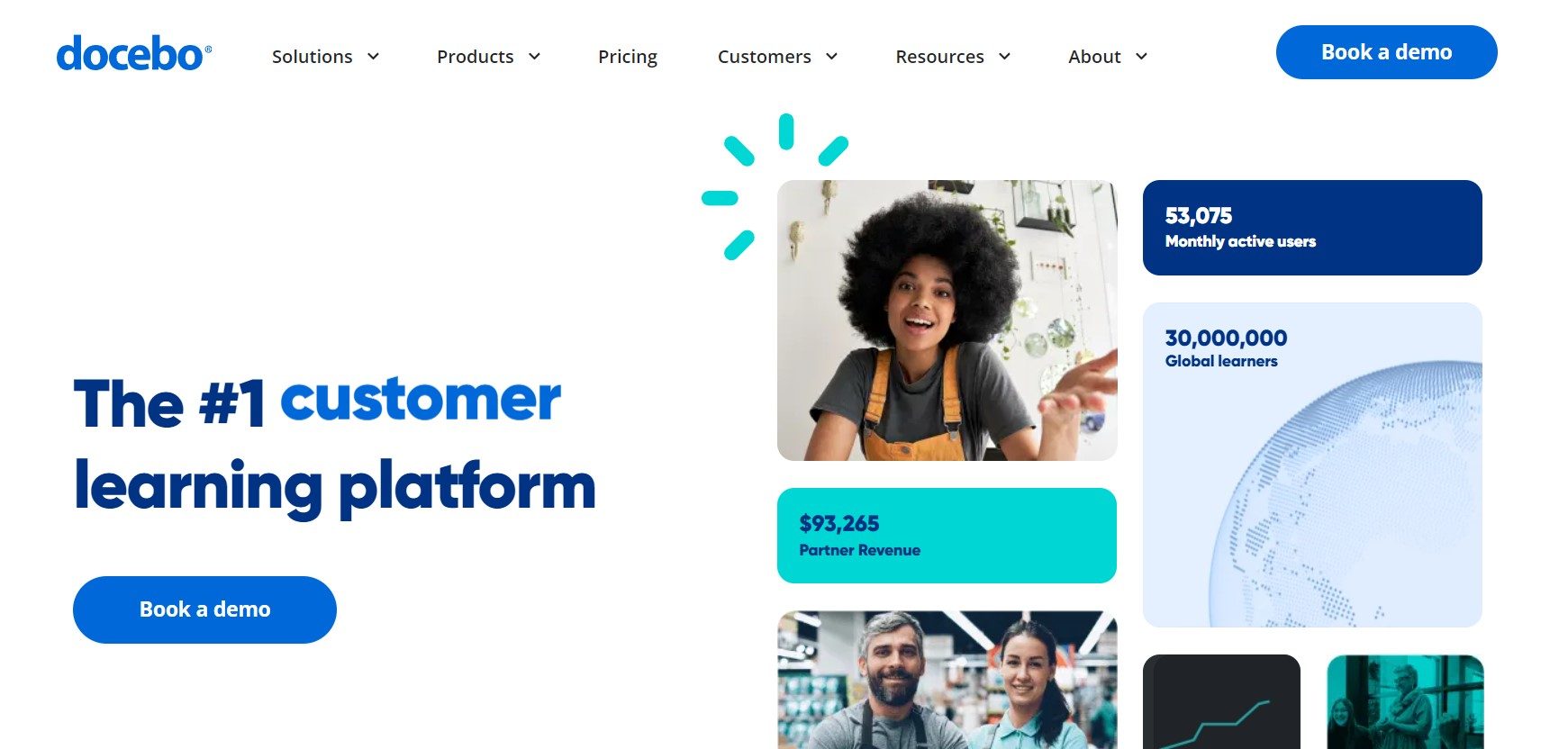
Best suited for: Associations looking to scale and unlock revenue streams by selling their e-learning content
Top Features
- AI-powered learning management and content creation capabilities
- Mobile and social learning functionalities
- Branding and white labeling
- E-commerce functionality
- Learner certification designing and delivery
About Docebo
As far as cloud-based LMS for associations go, Docebo’s learning platform takes the cake, as it is especially suited for internal and external member training thanks to its unmatched scalability and versatility.
Docebo’s learning platform includes several features to boost learner engagement with your training programs, like:
- AI-driven personalization to meet each learner’s own learning needs, goals, and styles,
- gamification elements, and,
- a variety of training formats such as social, multimodal, mobile, and blended learning.
Docebo’s Certification & Retraining app allows you to design and deliver certification programs, while Docebo’s AI authoring tool enables you to create learning content easily in minutes.
You can turn long-form internal and external knowledge into bite-size pieces of content, known as learning pills, in multiple formats and languages through its AI authoring tool.
Docebo also acts as an e-learning content management platform, granting you access to thousands of off-the-shelf courses.
With an in-built e-commerce functionality, Docebo also empowers you to unlock a new revenue stream, enabling you to sell your own courses and generate some non-dues revenue.
Docebo is a SCORM-compliant LMS that includes single sign-on capabilities, forums and other communication features, learning data tracking, and reporting functionalities.
| Pros (what users like) |
| “Very good usability for admins and end users.” — Adriano I
“Easy extended enterprise set up meaning we can segment our LMS for different target audiences.” — Jack D “Course administrators can make a solid, professional, easy-to-navigate course without having to be an expert at design.” — Dave K |
Moodle
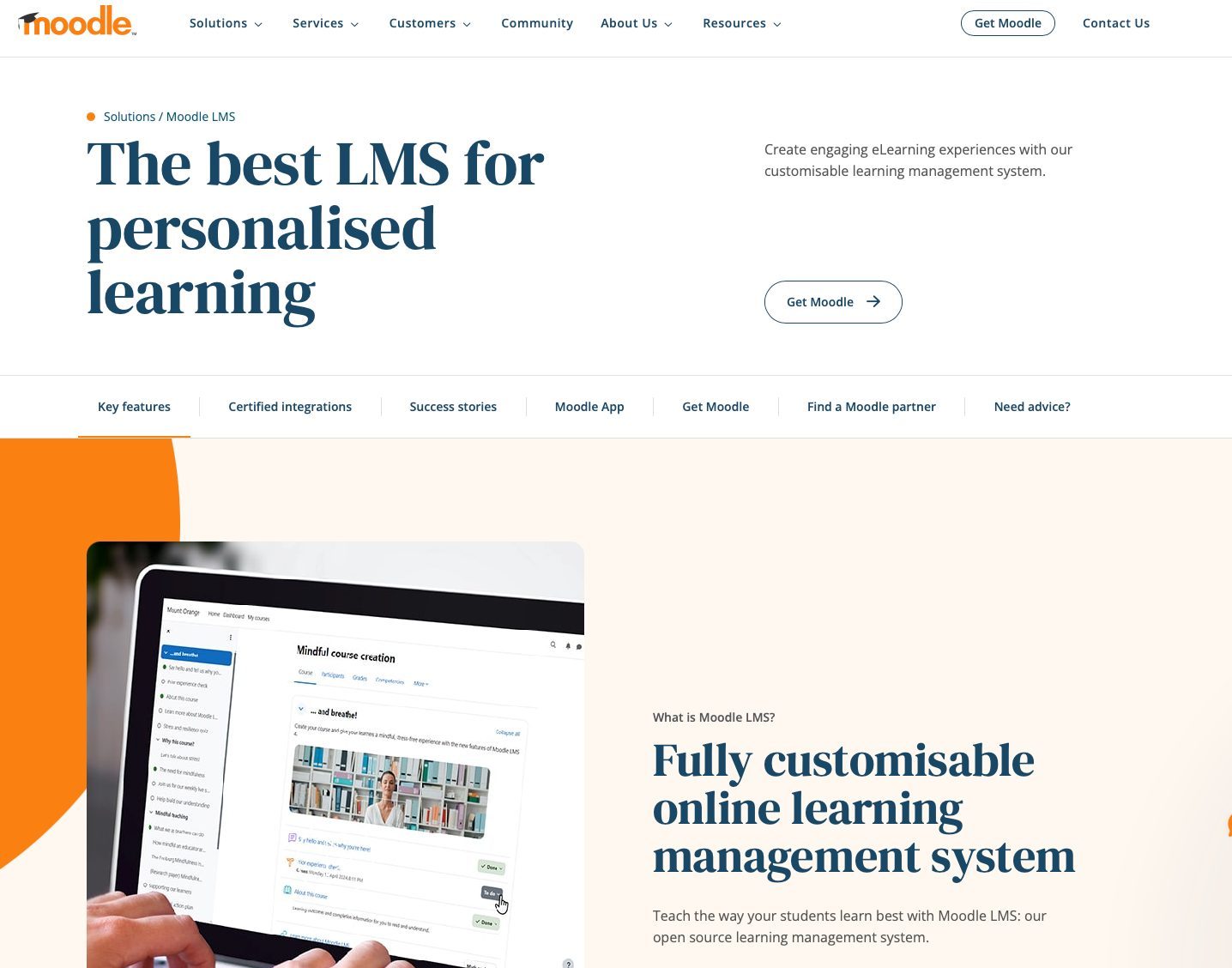
Best suited for: Associations who are looking for an affordable LMS option
Top Features
- Open-source API for free user access
- Thousands of open-source plug-ins
- Online and offline mobile access
- Multi-language support
About Moodle
Moodle is an open-source LMS that provides a high level of customization and flexibility.
It includes a mobile app with offline learner access and is also able to integrate with numerous third-party applications and open-source plug-ins.
Moodle includes various content-creation and distribution functionalities such as video conferencing, quizzes, forums, assignments, and more.
However, since it’s an open-source learning platform, it does provide the LMS basics but it doesn’t offer customer support and requires somewhat extensive knowledge to use effectively.
| Pros (what users like) | Cons (what users don’t like) |
| “It is free and, in general, has all the tools for e-learning.” — J. Fernando V.
“Being open source, there’s no limit to what one can add, create.” — Bruno T. |
“Without internal technical expdertise, it requires dependency of a service provider and this may be costly, even if it is open access.” — Cassious M.
“Customer Support is lacking and takes a great deal of time to get answers for issues.” — Ester R. |
Adobe Learning Manager (formerly Adobe Captivate Prime)

Best suited for: Associations that use many of Adobe’s products as it can easily integrate with other Adobe products
Top Features
- AI-powered social learning and recommendations
- Learning path personalization
- Online and in-person learning capabilities
- Just-in-time learning
- Analytics and reporting functions
About Adobe Learning Manager
Adobe Learning Manager, formerly known as Captivate Prime is a cloud-based LMS for content authoring and management.
It includes AI capabilities to enhance the user experience by identifying and reducing learner skill gaps. It can also track course progress and design highly engaging e-learning content.
The platform can integrate with many third-party applications, as well as your association’s other applications and websites.
| Pros (what users like) | Cons (what users don’t like) |
| “I like the fact that Adobe Learning Manager works most like Netflix suggesting courses based on your interest levels.” — Madhu G.
“Adobe Learning Manager provides maximum flexibility and customization to help us develop the system to integrate into our teams with success.” Connie K. |
“Search needs to be better for learners. They should be able to search for courses as well as learning paths without being shown one exclusively.” – Madhu G.
“It does not provide the basic functions that an LMS should.” – Automotive industry user |
TalentLMS
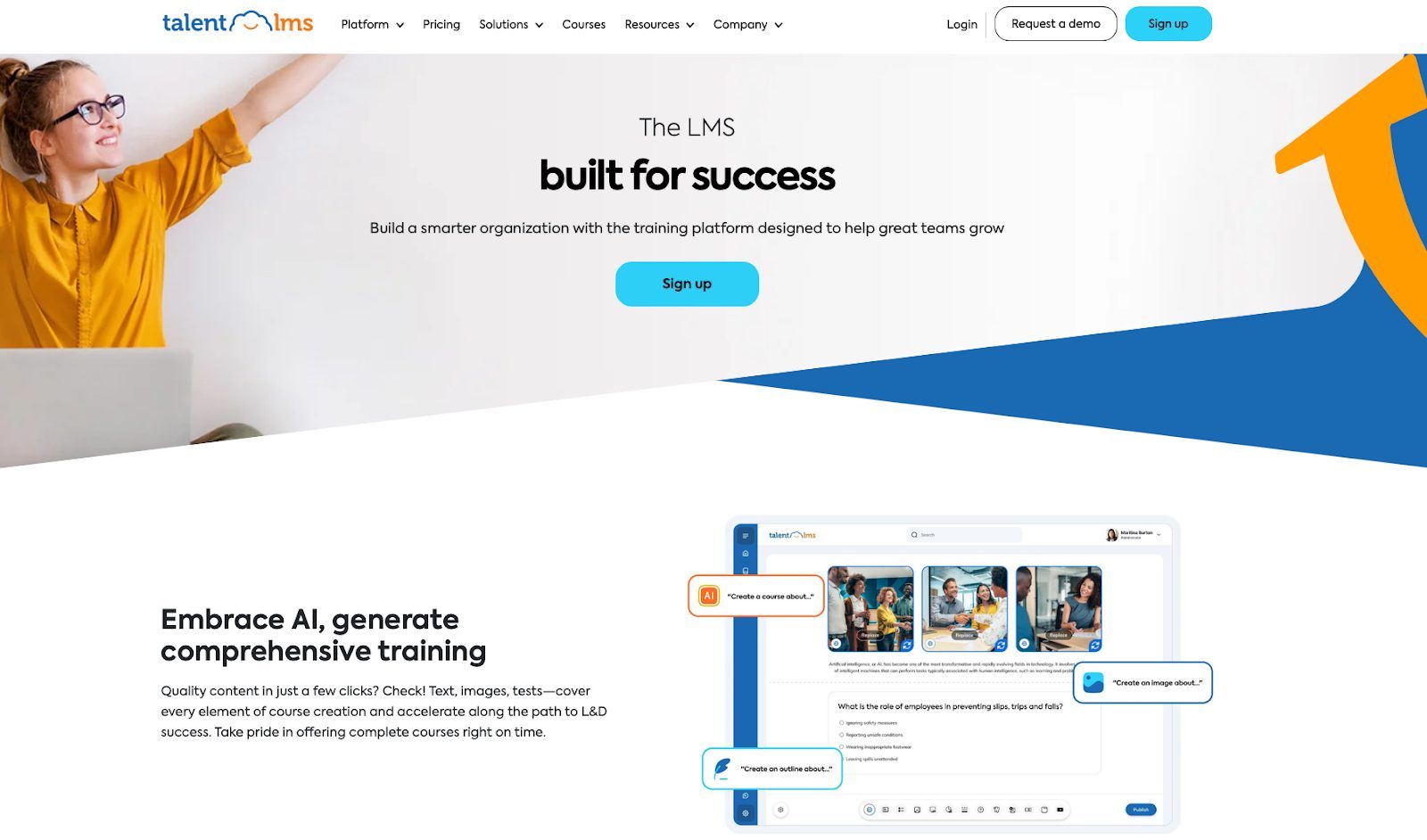
Best suited for: Small associations looking for their first LMS
Top Features
- Certification and achievement tracking
- Learner path customization
- Member self-registration
- E-commerce functionality
- Single sign-on with higher-tier plans
About TalentLMS
TalentLMS is a scalable and intuitive learning solution for e-learning course creation, management, and customization.
You can personalize your training programs to fit individual learning paths and different languages.
It includes custom certification creation and management functionality, as well as interactive training modules.
TalentLMS provides various gamification elements, as well as interactive course designs like tests, assignments, or quizzes that can engage your diverse member ecosystem.
| Pros (what users like) | Cons (what users don’t like) |
| “I can configure each course with different certificates and paths.” — Brandie B.
“Simple to get set up and very easy to administer.” — Chris G. |
“Support has been slow and not always helpful.” — Josh H.
“Talent LMS does have some downsides, especially in the area of reporting. the reporting capabilities need to be enhanced in a variety of ways. They have a number of good, out-of-the-box reports, but these reports cannot be edited or modified in any way.” — Mark D. |
Blackboard Learn
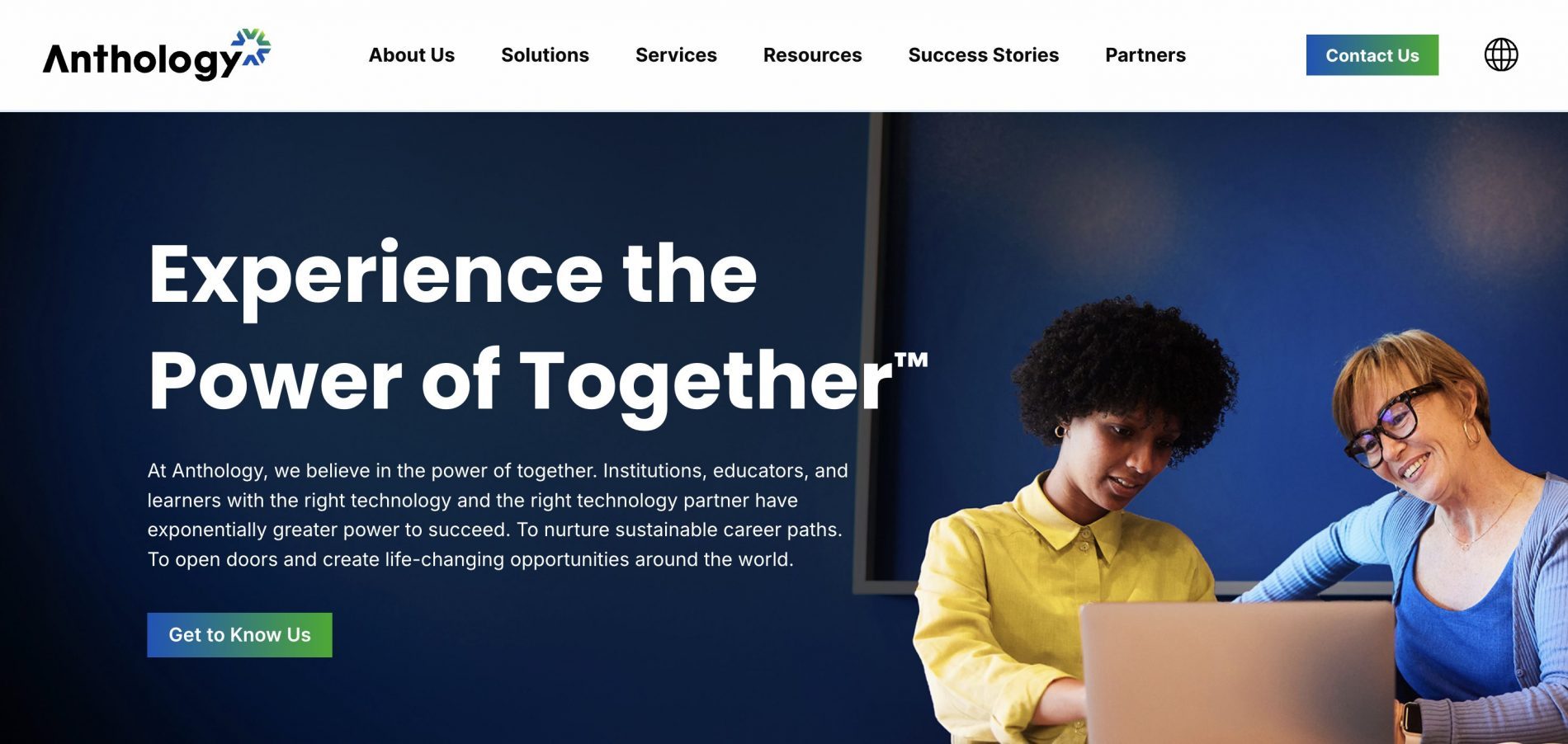
Best suited for: Educational institutions or academic associations focused on professional development
Top Features
- Personalized e-learning capabilities
- Flexible assessments
- Diverse range of collaboration tools
- Customizable feedback options
- Integration with cloud storage services
About Blackboard Learn
Blackboard Learn is a SaaS LMS that can help associations and NGOs provide a seamless learning experience to members and non-members alike.
Among its core features, we can include course content management tools for creating, curating, and delivering training materials to learners.
It also offers interactive and gamification elements, as well as assessment, reporting, and feedback features.
Blackboard Learn provides messaging tools, forums, notifications, and announcements, as well as branding and third-party integrations.
| Pros (what users like) | Cons (what users don’t like) |
| “Easy to use and very organized.” — Lamis L.
“BlackBoard Ultra really helps keep our courses sleek looking, easy to move through, and build, as well as helps students with navigation.” — Heather W. |
“It’s too cumbersome. There’s a lot of legacy built around new features. Many times it gets confused and reverts back to its legacy homescreen.” — Tim S.
“Lack of embedded images/links in emailed course announcement.” – Jacob S. |
Canvas by Instructure
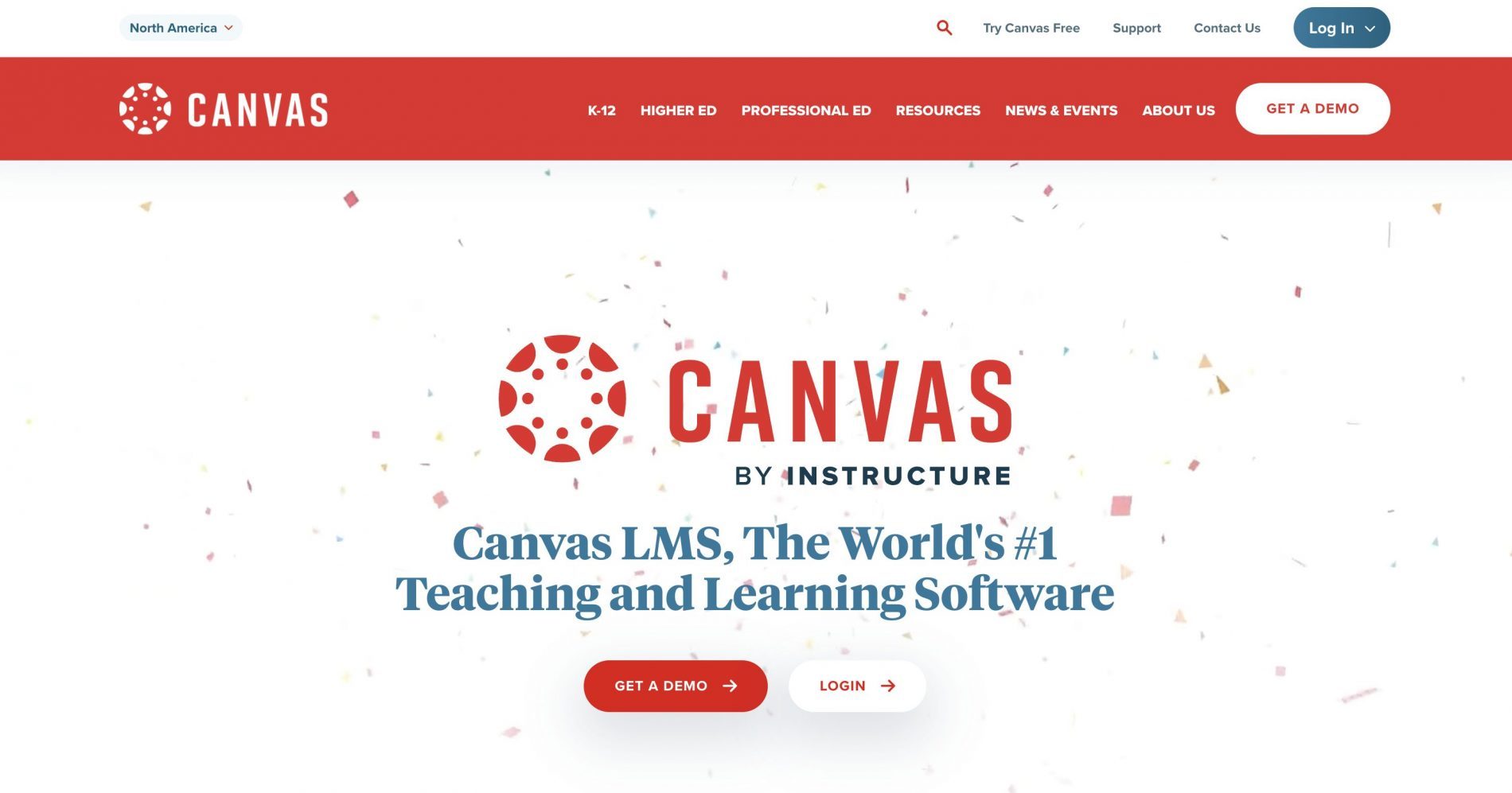
Best suited for: Academic associations and institutions seeking a cost-effective solution with a modern, easy-to-navigate interface.
Top Features
- E-learning content authoring
- Training course management
- Certification management and credential imports
- Customizable learner assessments
- Mobile learning capabilities
About Canvas
Canvas by Instructure is an open-source learning management platform with a focus on academic learning. However, it can work for other organizations such as associations or NGOs.
You can use it to keep track of learner certifications as well as to monitor engagement with course material.
Canvas also allows for training course personalization and offers interactive course creation through the use of discussion boards, quizzes, and assignments.
The platform integrates with numerous third-party tools and allows you to import user credentials from other platforms if needed.
| Pros (what users like) | Cons (what users don’t like) |
| “Without Canvas, I wouldn’t be the incredibly effective educator I can be today!” — Elizabeth M.
“In general, it’s very user friendly.” — Lisa D. |
“There is a learning curve. I had to watch some videos to learn about a lot of the different features since I didn’t have anyone to specifically teach me, so it can be overwhelming at times.” — Jessica D.
“The thing I dislike most about Canvas is that the mobile application version seems to be neglected when compared to the web version.“ — Brenda C. |
SAP Litmos

Best suited for: Associations looking to expand their professional development programs into revenue-generating opportunities.
Top Features
- Social learning and instructor-based training
- Built-in content authoring
- e-Commerce capabilities
- Customized learning paths
- Gamification elements.
About Litmos
SAP Litmos is a cloud-based digital learning solution with a built-in content-authoring tool and task-automation capabilities.
It also comes equipped with out-of-the-box e-commerce functionality to monetize courses. SAP Litmos provides a high degree of learning path customization and custom user-interface branding.
Likewise, the tool offers both online and in-person instructor-led training, social learning, and video assessments. Instructional designers can also include gamification elements in their courses, while educators have access to tracking and reporting tools.
| Pros (what users like) | Cons (what users don’t like) |
| “Litmos has a clean, modern interface that is friendly to users.” — Joel T.
“Another major advantage has been the Single Sign-On feature for our learners.” — Bryaent E. |
“As a global firm, it would be great to see more content in other languages.” — Francie K.
“Reports through the reporting engine often have missing data.” — Marlene D. |
Cornerstone Learning
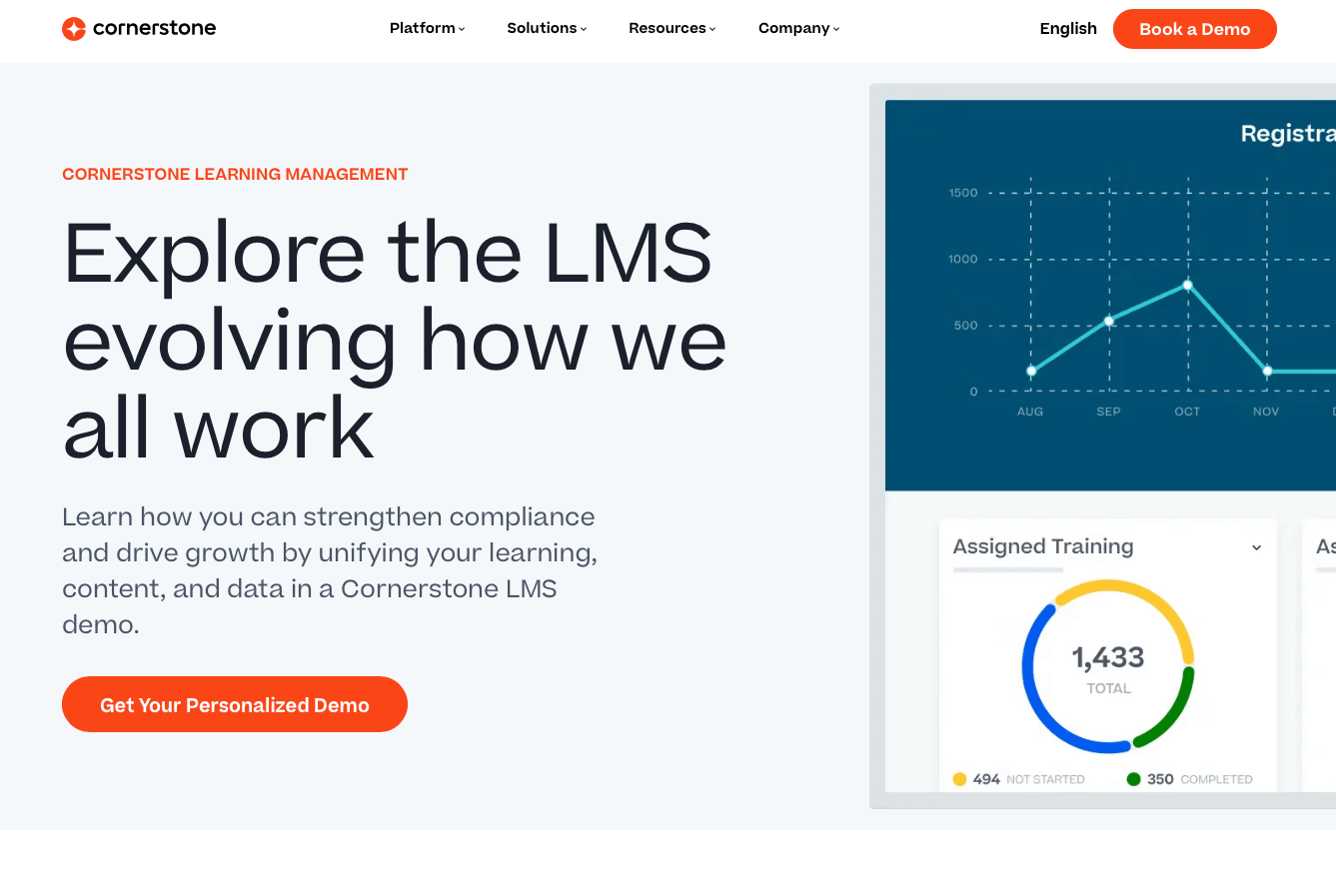
Best suited for: Well-established associations with a large audience that require a comprehensive and scalable learning and talent management solution.
Top Features
- Certification management
- Augmented-reality training
- Automated skill assessment
- Skill mapping
- Multi-language support
About Cornerstone
Cornerstone OnDemand is a cloud-based learning tech company and software provider. Its flagship product, Cornerstone Learning, is designed to drive skill development and engage learners.
With its Extended Enterprise Learning functionality, you can appropriate training and certifications to association members on all types of devices.
It includes virtual- and augmented-reality training capabilities, as well as automated skill assessment and mapping functionality.
Cornerstone Learning can also integrate with third-party solutions like e-commerce, AMS, or human resources information systems (HRIS).
| Pros (what users like) | Cons (what users don’t like) |
| “As an Admin, it provides lots of features to automate the experience and leverage the data in the system.” — Tina P.
“The reporting functionality is excellent.” — Julie R. “The learning management system is highly customizable and offers a unique experience for each user type.” — Marie C. |
“Set up was a struggle.” — Jennifer W.
“Some times the system is not behave as expected or glitches can happen. At times, even GPS and product managers can’t answer to why the issues are happening or what’s causing the issue.” —- Shirley W. “Customization is possible but not as much as we would like.” — Sonia G. |
Sana
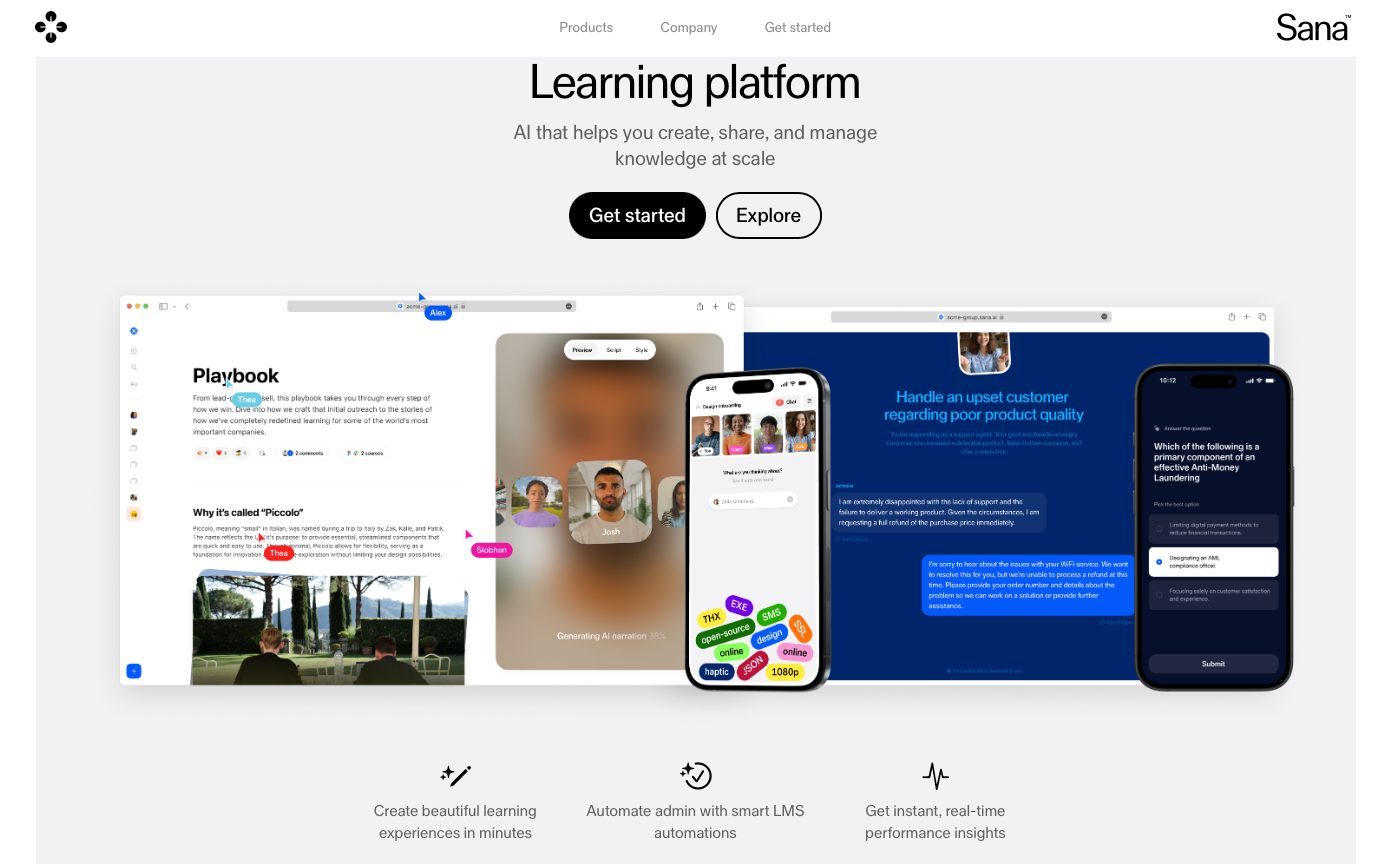
Best suited for: Associations looking to try out AI capabilities to enhance their L&D programs
Top Features
- AI-powered content creation
- Automated administrative tasks
- Personalized learning paths
- Third-party integrations
- Compliance tracking
Sana is an AI-powered LMS designed to reduce administrative tasks and assist with content creation.
The platform offers features like personalized learning paths, real-time analytics, and the ability to access training across devices.
Sana integrates with third-party tools such as HR platforms and collaboration software to support organizational training needs.
Since it requires full integration with your system to enable continuous AI improvement, system security can be a concern.
| Pros (what users like) | Cons (what users don’t like) |
| “Sana’s user-friendly interface makes it easy to build and customize courses with various formats like videos, texts, and infographics.” — Daniel V.
“The platform provides valuable insights into learner progress, helping track and improve performance effectively.” — Piotr W. |
“Lack of editing options in course creator, many features are unavailable and has to be done outside of the platform using 3rd party providers.” — Kestutis V.
“Importing external content sometimes has limitations, needs a Compliance Center/functionality.” — Kyle S. “Sana is a fairly new system and hence there are features that we’re used to from our previous LMS that do not exist – yet.” — Saga E. |
LearnUpon
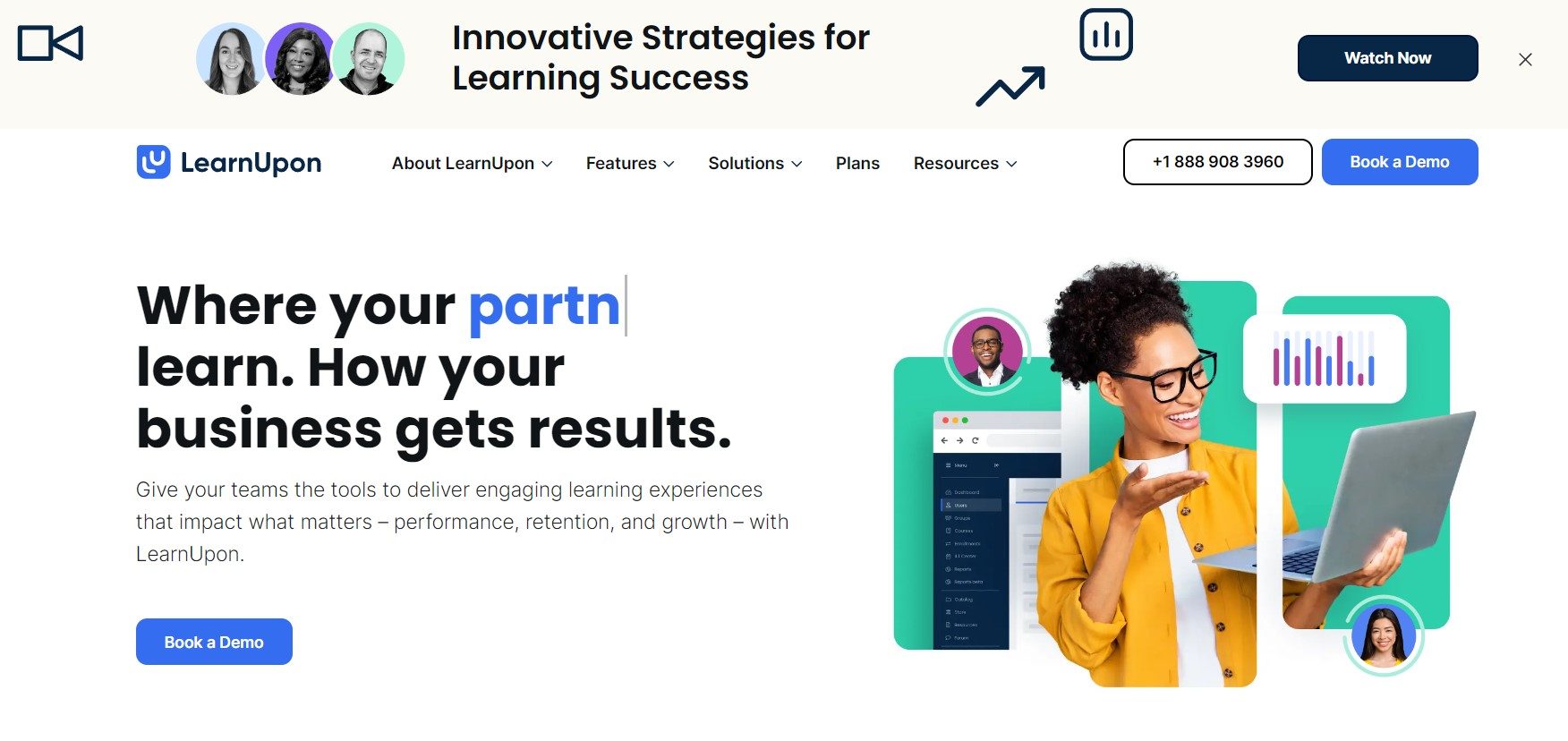
Best suited for: Associations centered around e-learning, offering a seamless platform to deliver, track, and manage online training effectively.
Top Features
- AI-powered training capabilities
- Customizable learning paths
- Certification management
- SCORM and xAPI-compliant
- Instructor-led training
About LearnUpon
LearnUpon is a content and learning management system for e-learning course authoring.
Instructional designers can combine, upload, and embed various file types into a single course module from third-party tools. You can also train multiple audiences by creating and customizing separate learning portals.
In addition, LearnUpon also automates workflows by eliminating many repetitive tasks.
It includes gamification elements and certification management, e-commerce capabilities, and a content marketplace. LearnUpon also provides white-labeling capabilities and multilingual support.
| Pros (what users like) | Cons (what users don’t like) |
| “I like how LearnUpon was very easy to learn when it came to creating content – equally easy to upload SCORM files or create content using their native software.” — Chris D.
“The quick response times and flexible support has been very helpful!” — Cynthia L. “The platform’s intuitive user interface simplified the administration of courses, exams, and surveys.” — Miranda G. |
“This LMS is lacking in reporting tools.” — Ezzy S.
“Our eCommerce page does not look how I would want it to – I would like more branding options.” — Mandana B. “The current way learning paths function could be drastically improved to allow learners to navigate more easily through a combination of courses.” — Jennifer R. |
Key factors when evaluating an association learning management system
Many variables go into choosing the right LMS that suits your association’s needs and requirements.
You need to understand your e-learning content goals. You also need to think about your target audience and how the LMS fits with their pain points.
Then, there are the costs of LMS implementation that you need to consider.
Is it suitable for your use case?
You need to make sure that the LMS caters to your specific use case.
Whether you’re a healthcare-based association, in education, or an NGO, you need to make sure that the LMS can handle your needs and requirements.
Does it have all the necessary features?
The same thing goes for the platform’s features and functionalities. Can they handle all your member-training pain points? Do you need content-authoring capabilities or e-commerce functionality?
It’s generally good practice to make a list of all the features you need and ensure the LMS includes them.
Is it a scalable solution?
Another important characteristic is whether or not the tool can scale alongside your association.
It’s not really worth your investment if you manage to attract more members only to experience issues when trying to educate them effectively.
The LMS should be able to take on an increasing workload without suffering from frequent interruptions or other issues.
Does it offer high quality customer support?
Equally as important is whether the tool offers sufficient support to help you get going, or when encountering various problems down the road.
This means the LMS should include a comprehensive knowledge base, FAQ section, maybe even a chatbot, and a helpful customer service team ready to assist you with everything you need.
Finding the right LMS for your association
As an association or nonprofit organization, you may find it difficult to keep your members engaged.
Fortunately, the right LMS can provide the right educational content, progress-tracking capabilities, and certification management to address the diverse needs of your members.
Schedule a demo with Docebo today and see how it can cater to your needs and those of your target audience.
Frequently Asked Questions
What is the best LMS for associations?
The top LMS for associations depends on your specific needs, goals, and budget. You can read more here about how to best choose the LMS for your needs.
But in general, if you’re looking for scalability and revenue generation, learning platforms like Docebo and LMSs like Litmos may be ideal. If affordability and open-source flexibility are priorities, Moodle of Canvas might be the right choice for you.
Ultimately, the best LMS for your association will be the one that aligns with your learning goals, integrates with your existing tech stack, and offers features that enhance member engagement and training effectiveness.
What are the key features of an LMS for associations?
An LMS for associations should include features tailored to support member engagement and professional growth. Key features to look for include:
- Certification management to foster continuing education
- Social learning, gamification and interactive content like quizzes, and webinars to engage members
- eCommerce features to unlock a new revenue stream from available content
- Personalized learning paths to tailor experiences based on individual member needs
- Plenty of integrations and automations to handle growing membership and workloads seamlessly
- Analytics and reporting to track learner progress and and other reporting metrics to gather insights for improvement
These features ensure the LMS can meet the diverse needs of associations and deliver value to their members.
How do I integrate an LMS with my association’s existing membership management software?
Integrating an LMS with your association’s membership management software (AMS) typically involves these steps:
- Check compatibility: Ensure your LMS supports integrations with your AMS. Many modern learning platforms like Docebo provide custom APis, or built-in compatibility for popular AMS solutions.
- Work with your vendors: Collaborate with your LMS and AMS providers to configure the integration. They often offer support to guide you through the process.
- Test the integration: Before going live, test the integration to ensure data is syncing correctly and workflows function as intended. Modern learning platforms like Docebo often provide a sandbox environment to test updates and changes.
- Monitor and maintain: once integrated, regularly review the system to ensure everything works smoothly and make updates as needed.
Integrating your LMS with your AMS streamlines operations, reduces manual work, and provides a unified experience for both administrators and members.